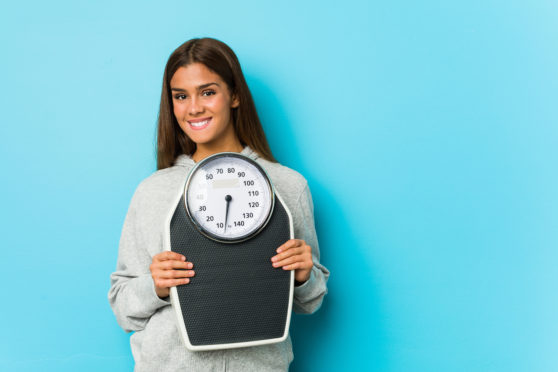
Want to lose weight? Then ditch the fad diets, say experts. With a new study revealing almost two-thirds of adults in Scotland are overweight, it’s no surprise that many of us are constantly searching for an easy way to lose weight fast.
But science suggests there’s no real quick fix to stop us piling on the pounds.
According to Dr Michael Greger, best-selling health writer and founder of NutritionFacts.org, being armed with the facts and science behind long-term weight loss is key to success.
“Every month seems to bring us a trendy new diet or weight-loss fad, and they always sell because they always fail. The diet industry is based on repeat customers,” he said.
In his new book, How Not to Diet, Dr Greger outlines in great detail the science behind healthy and permanent weight loss. His findings champion a plant-based diet and mindful eating.
He recommends basing your diet around Green Light foods – those that are grown rather than manufactured, low in calories, high in nutrients, colourful, and usually can be eaten raw.
“The solution is simple; no magic bullets, no meal replacements or meetings to attend,” he said.
“The same diet that has been shown to prevent, treat and reverse some of our leading killer diseases just so happens to be the one with the greatest potential for permanent weight loss: a diet centred on whole plant foods.
“We should eat real food that grows out of the ground, natural foods that come from fields not factories, gardens not garbage.”
Here, Dr Michael Greger shares his top weight loss tips to incorporate into your daily routine…
Take water before dinner
Time your metabolism-boosting two cups of cool or cold unflavoured water to take before each meal.
Then enjoy fruit or salad
As the first course, start each meal with an apple or a Green Light soup or salad containing fewer than 100 calories per cup.
Go easy on the vinegar
Never drink vinegar straight. Instead, flavour meals or dress a side salad with any of the sweet and savoury vinegars. If you want to drink it, make sure to mix it in a glass of water and, afterwards, be sure to rinse your mouth to protect your tooth enamel.
Turn off the TV
Make sure you eat without distraction, so don’t have a meal while watching TV or playing with apps on your smartphone.
Get an early night
Aim for at least seven hours of sleep at your regular bedtime.
Follow the 20-minute rule
Whether through increasing viscosity or the number of chews, or decreasing bite size and eating rate, no matter how we boost the amount of time food is in our mouths it can result in lower caloric intake. So extend meal duration to at least 20 minutes to allow your natural satiety signals to take full effect. Think bulkier, harder, chewier foods in smaller, well-chewed bites.
Drink green tea
Enjoy three cups a day between meals (waiting at least an hour after a meal to avoid interfering with iron absorption). During meals, drink water, black coffee, or hibiscus tea mixed 6:1 with lemon verbena, but never exceed three cups of fluids an hour. Taking your tea without sweetener is best, but if you do use honey or sugar, try yacon syrup (a plant-based sweetener) instead.
De-flour your diet
Make sure your daily servings of wholegrain are in the form of intact grains. The powdering of even 100% whole grains robs our microbiome of the starch that would otherwise be ferried down to our colon enclosed in unbroken cell walls.
Make breakfast count
There are metabolic benefits to consuming more calories earlier in the day, so make breakfast (ideally) or lunch your largest meal of the day.
Beat the clock
Confine eating to a daily window of time, of your choosing, under 12 hours in length that you can stick to consistently. Given the benefits of reducing evening food intake, the window should end before 7pm.
Exercise every day
I recommend 90 minutes of moderately intense activity a day as the optimum exercise duration for weight loss. Any time is good, and the more the better, but there may be an advantage to exercising in a fasted state, at least six hours after your last meal. Typically this would mean before breakfast.
Check the scales twice a day
Regular weighing is considered crucial for long-term weight control, but there is insufficient evidence to support a specific frequency of weighing. My recommendation is based on the one study that found that twice-daily – upon waking and right before bed – appeared slightly superior to once a day (about six vs two pounds of weight loss over 12 weeks).
Stop eating after 7pm
Thanks to our circadian rhythms, food eaten at night is more fattening than the exact same food eaten earlier in the day, so fast every night for at least 12 hours starting before 7pm. The fewer calories after sundown, the better.
How Not To Diet: The Groundbreaking Science of Healthy, Permanent Weight Loss, Bluebird, £20

Enjoy the convenience of having The Sunday Post delivered as a digital ePaper straight to your smartphone, tablet or computer.
Subscribe for only £5.49 a month and enjoy all the benefits of the printed paper as a digital replica.
Subscribe